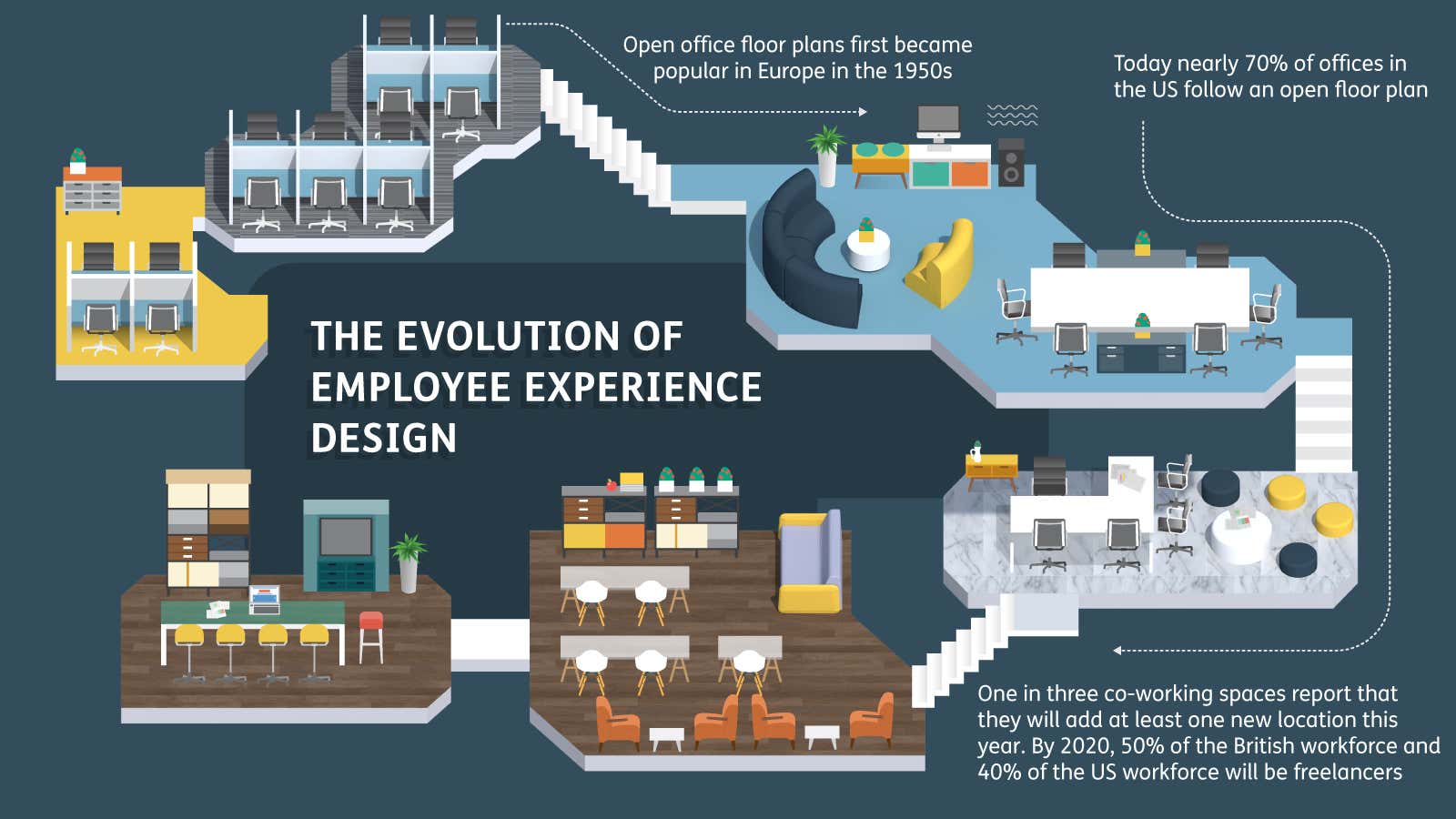Design thinking has taken hold across almost every industry and business function in the US and the UK. Designers (and the principles they use) are often tapped to help individuals and companies embrace a more holistic way of living. In the US, this trend tends to start with environments that cater to a multitude of needs, while in the UK, design often begins with the initial physical space. Both countries, though, are applying their own take on a new trend gaining significant attention: Employee Experience (EX).
EX is a term meant to encompass the physical, cultural, and technological environments an individual encounters while working. The idea is to use design to understand the conscious and subconscious needs involved with improving everyday happiness and productivity.
Design already plays a large role in the choices we make about the products we use. When people choose a car, for example, color is a factor: People who choose silver cars are more likely to value security and style.
Attempting to use color to trigger another aspect of the subconscious, businesses have started employing intelligent color choices in the office to initiate psychological cues: low-wavelength colors like green and blue have been shown to improve efficiency and focus.
The buzz around the power of design within an office is nothing new. In fact, the open office layout first took hold in Europe in the 1950s where the absence of a seating hierarchy was in line with post-war politics. Today, nearly 70% of offices follow an open floor plan. But as technology advances and expectations are heightened, open floor plans no longer suffice.
“People do need to congregate, they need to look each other in the eye still,” says British designer, Tom Dixon, who has been experimenting with office plans in the UK. “But it’s difficult to get the balance right.”
Thanks largely to Silicon Valley, the US has taken a global lead in the EX arena, and American offices purposefully designing for EX have been moving away from the open one-size-fits-all model. This means seamlessly weaving in different settings like lounges strategically placed next to meeting rooms, and infusing white noise into public spaces (people are reportedly 27% better at performing complex tasks with the accompaniment of white noise). These types of layouts give people more control over their work space, and take into account their complex daily needs.
EX is also transforming the design landscape in the UK, especially in the area of co-working spaces, where it’s predicted that by 2020, 50% of the British workforce will be comprised of independent workers. At a design exhibition in London, for example, Tom Dixon collaborated with a vicar to transform the venerable St. James Church into a progressive co-working space outfitted with filtered lighting. In the UK, businesses are taking advantage of the abundance of grade listed buildings and turning the less traditional environments into creatively designed office spaces.
The UK, in fact, is now home to some of the most innovative EX design thinking: It was a London-based firm that designed Amsterdam’s famous “Edge”—reportedly the smartest and greenest building in the world—that houses Deloitte employees. 28,000 sensors monitor everything from energy to light to humidity. The approach is based on the idea that data and smart applications can make for an environment that instantly responds to people’s needs.
A focus on design will continue to present exciting possibilities for how individuals will interact with their environments. As evidenced by the increasing number of companies adopting a more nuanced approach to catering to people’s needs, design will increasingly play a leading role in each of our daily interactions.
Explore how the all-new Jaguar F-PACE integrates premium design with practicality and efficiency.
This article was produced on behalf of Jaguar by Quartz creative services and not by the Quartz editorial staff.
